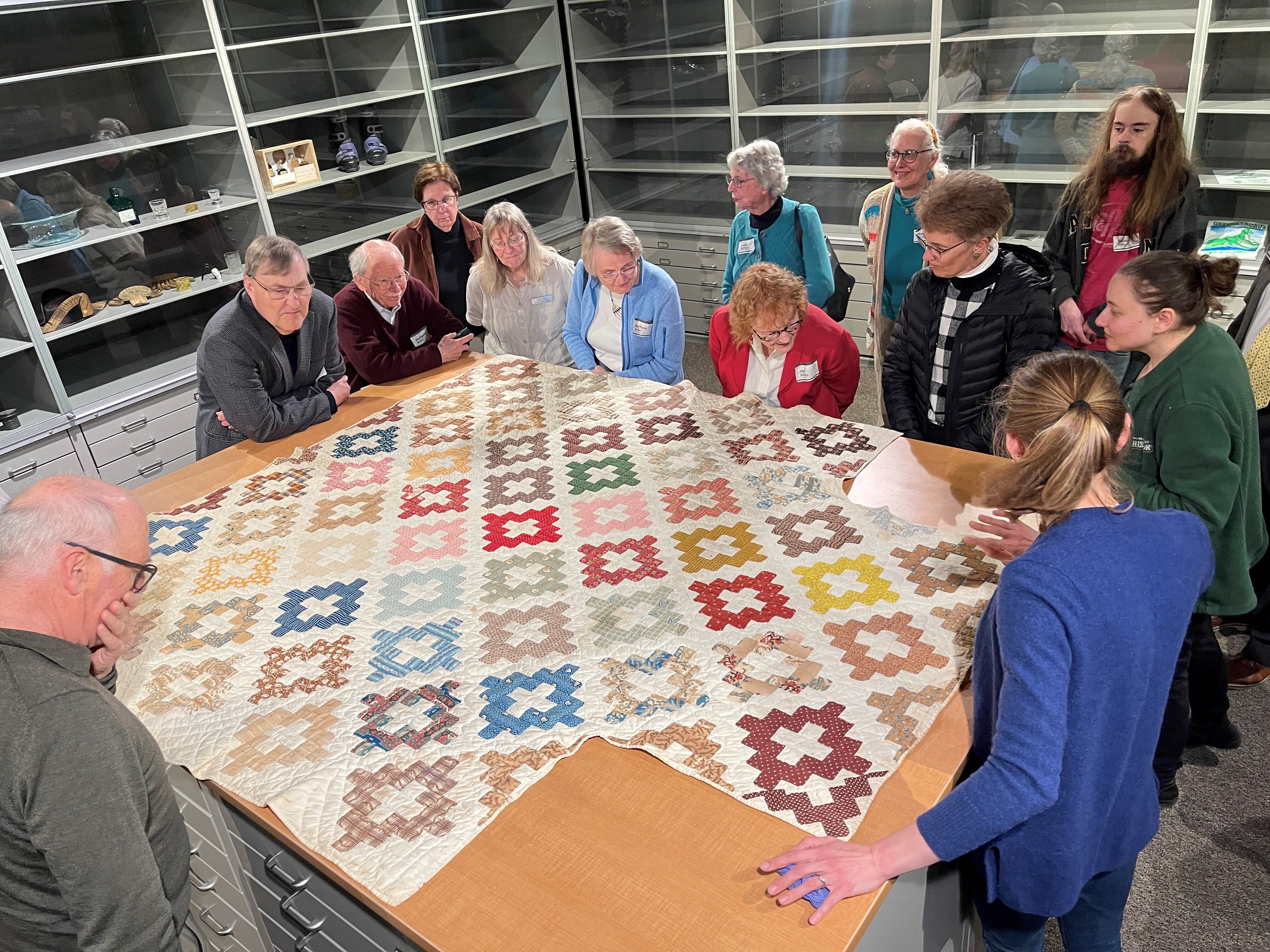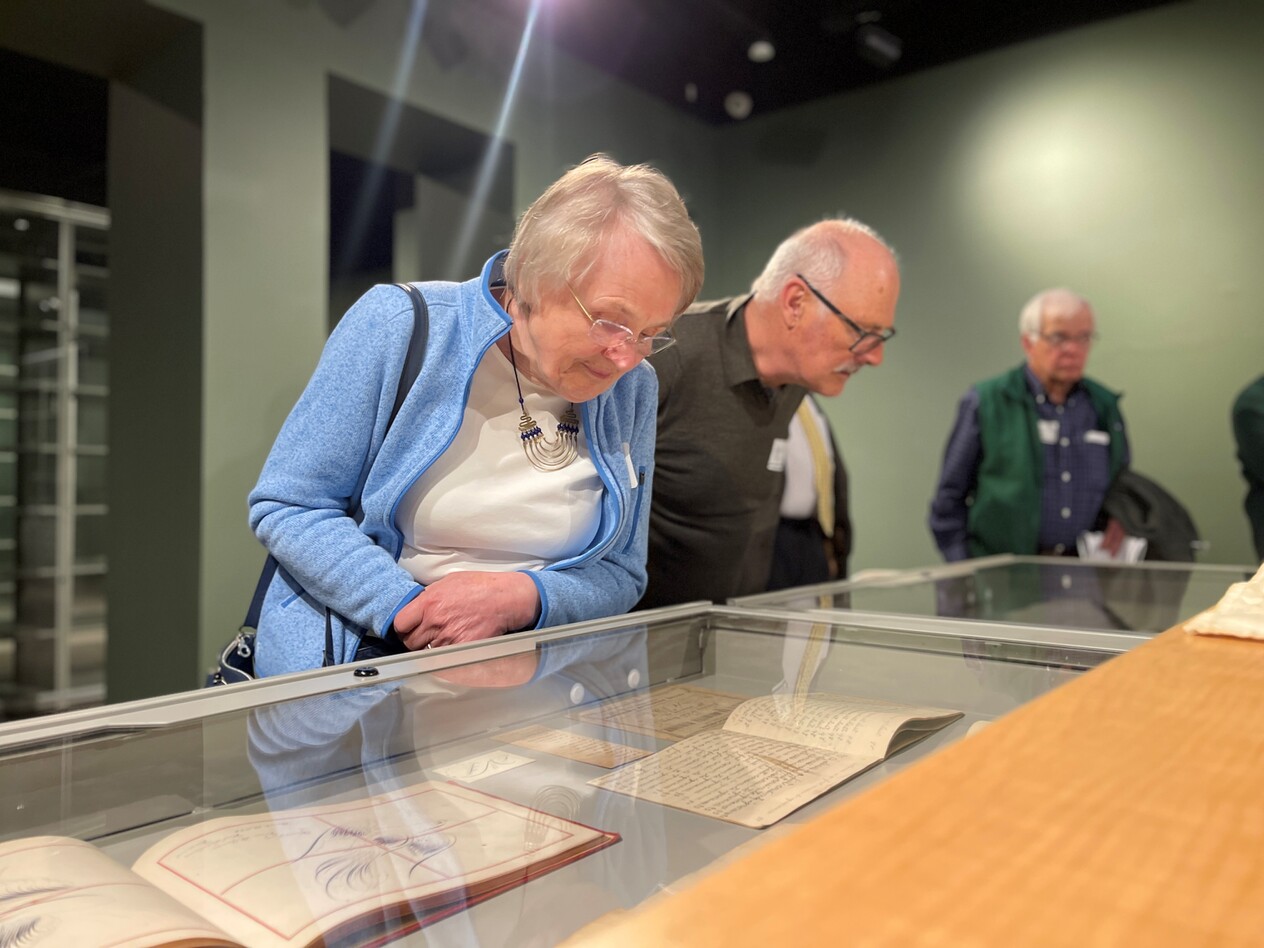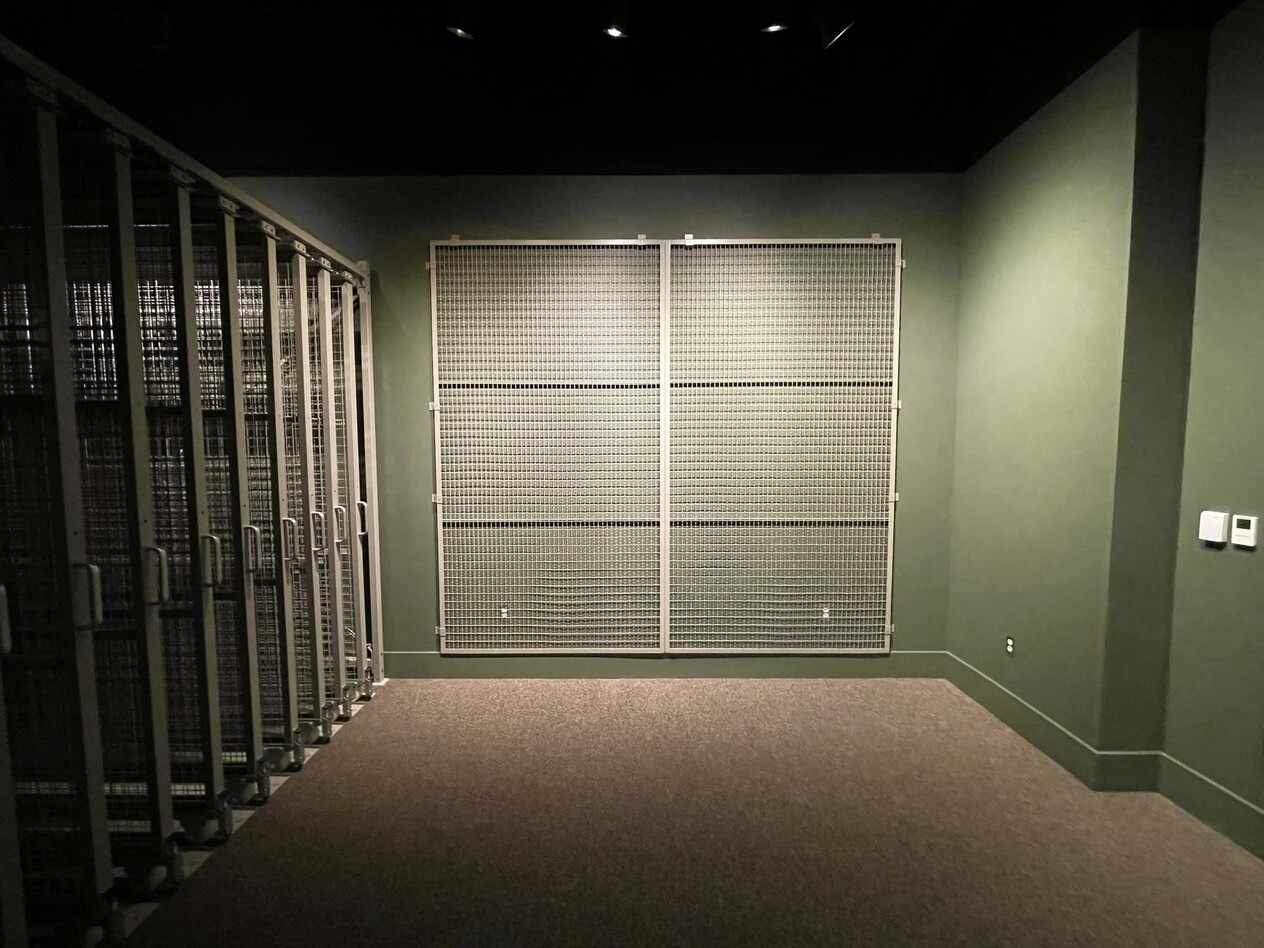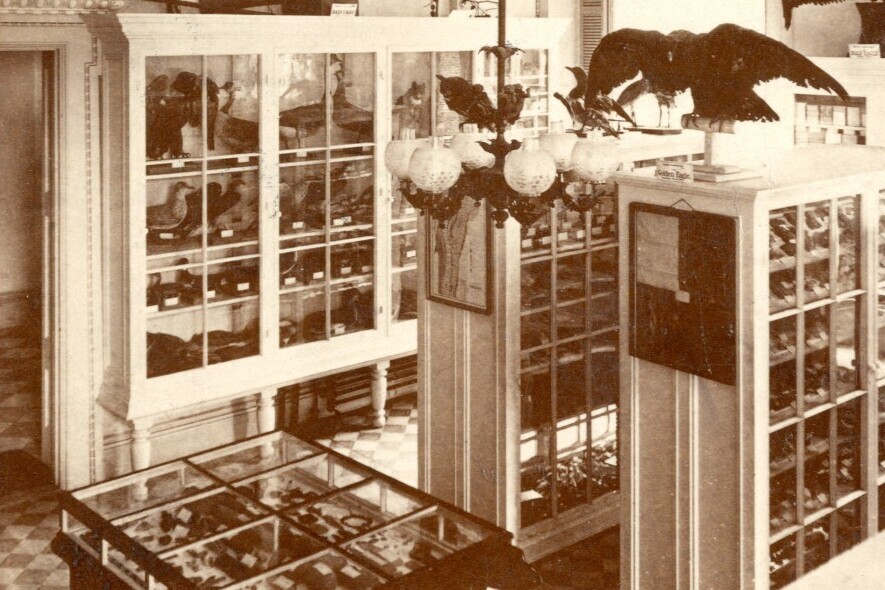Creating the New Research & Exhibition Gallery

This opening marks years of careful planning and collaboration
In the earliest plans for the conversion of the old Spaulding School to become the home of the Vermont Historical Society, you can see a kernel of an idea for an open storage gallery. Twenty years ago, “open storage” was a new concept, allowing visitors to peek behind the curtain at the work of a history-focused institution. Beautiful new open storage spaces at the Deerfield Museum in Massachusetts and the Brooklyn Museum in New York allowed the public access to collections in different ways than the traditional highly curated and sparser exhibitions usually on display.
The scope of the school conversion narrowed, and ultimately the Vermont History Center ended up without open storage. Until several years ago, an open storage gallery remained only an aspiration. This fall, however, the Research and Exhibition Gallery will come to fruition, giving us greater flexibility and capacity to do the most important work: connecting Vermonters to the stories in their history. This opening marks years of careful planning and collaboration.
We began construction on the gallery in the summer of 2022. Working with Donnegan Systems, a storage solutions company based in Northborough, MA, we came up with some initial plans for the space and prepared an application to the Congressionally Designated Spending program through the office of Vermont Senator Bernie Sanders. The Senator’s office saw the promise in our plans to exhibit more of our collection than we had ever been able to before, and they approved our application and advocated for its inclusion in that year’s federal budget.
Once the budget passed in December 2022, we moved forward on our plans. Donnegan Systems helped us refine those initial plans and settled in to wait for production to begin on the shelving units—a process slowed by supply chain limitations. By late October 2023, the shelves were completed, and Donnegan’s technicians arrived in Barre to begin their work installing the glass-fronted shelves and wire racks.

Nearly three weeks later, we cleaned the glass and wiped off the construction dust and began the next phase of upgrading the gallery: installing nearly fifty new lights onto the existing ceiling track. We significantly increased the number of things we’d need to highlight, and the new fixtures will let us control where light and shadow fall in the room with more precision than ever before.
In the winter of 2023, VHS completed the installation of this beautiful new gallery filled with shelving, drawers, and display cases to showcase the objects in our collection. In the time since the original idea appeared on the History Center’s blueprints, we’ve better realized and updated the idea of an open storage gallery to fit the work we are doing now. We can showcase hundreds, if not thousands, of objects while welcoming in groups of visitors and researchers for specialized, hands-on encounters with our collections.
With the shelves and lighting now in place, the next phase of the project can finally begin: filling the gallery with collections objects and archival materials. In the years to come, we plan to cycle objects in and out. For this first installation, we will focus on the themes developed by the American Association of State and Local History for the 250th commemoration of the Declaration of Independence. AASLH’s guidance includes broad themes that celebrate the full sweep of American history, such as “Unfinished Revolutions,” “Power of Place,” and “We the People.”
The Collections & Access department (which encompasses both library and museum collections) has already begun conversations about thoughtful selection and presentation. How can we put two items that may be one hundred years apart in history next to each other to help visitors draw conclusions about the progress of civil rights in Vermont? What can campaign buttons and broadsides tell us about the changing nature of democracy? In what ways can we connect with lives lived at the very beginning of the state of Vermont and in the centuries since?

In addition to selecting items for display, staff are working with VHS’s educators in the Service & Outreach department to make sure that we are inviting diverse groups for more focused learning and research. We have applied for additional funding that would support teacher workshops, outreach to college history departments, and focused work with community groups.
At VHS, we believe fervently that connecting to the history of Vermont builds better communities, and the new Research and Exhibition Gallery provides us with an incredible opportunity to bring Vermonters closer than ever to pieces of the past.
This article originally ran in the Spring 2024 issue of History Connections. To stay up to date with the Vermont Historical Society, sign up as a member, subscribe to our newsletter, or follow us on social media.
